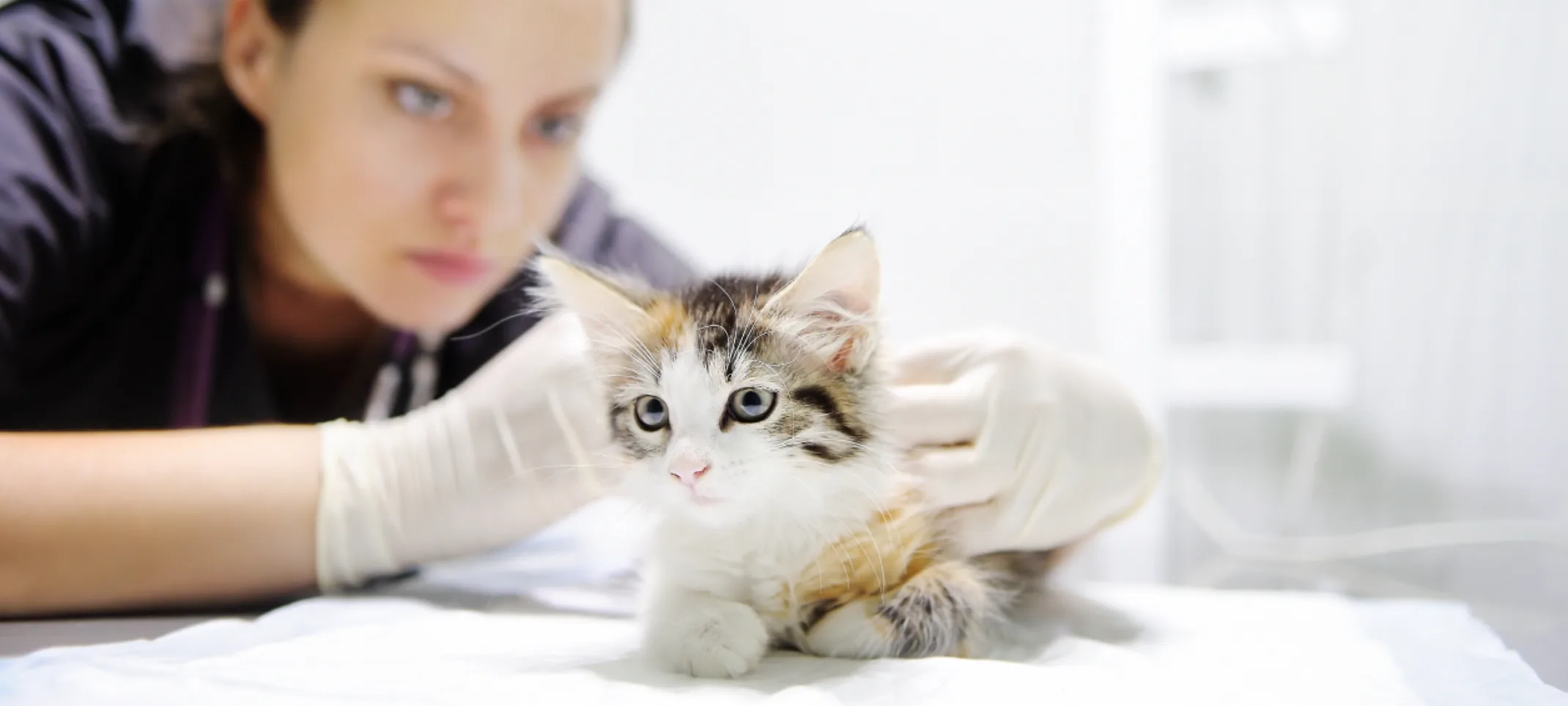Animal Specialty & Emergency Center of Brevard
Feline Urinary Obstruction
Feline idiopathic cystitis sometimes results in partial or complete urethral obstruction.

Feline idiopathic cystitis is the currently accepted veterinary term for the idiopathic inflammatory process of the feline bladder and urethra. Sometimes, it is also referred to as: feline interstitial cystitis, feline urologic syndrome, feline lower urinary tract disease, sterile cystitis, and feline obstructive uropathy.
Overweight cats may be predisposed.
Male and female cats are equally affected but males are more likely to be obstructed (flow of urine cut off by a blockage in the urethra)
What is a urinary blockage?
A urinary blockage occurs when a cat’s urethra (the tube draining urine from the bladder) becomes obstructed by inflammatory material, mucus, crystals or small stones (calculi). The cause of the inflammatory materials and stone formation it not well understood, though viral infections and diet may play a role. Other possible causes are cancer, previous injury causing scarring, and trauma. Early neutering of cats does not cause reduction of urethral size as it does in some other species.
The obstruction can be partial, allowing the cat to pass small amounts of urine, or it can completely block the urethra and prevent any urine from passing. Urinary obstructions commonly occur in male cats due to their narrow urethra; female cats block less frequently.
If left untreated, a blocked cat will fall into kidney failure and suffer painfully before passing away several days later.
Feline urinary obstruction is an emergency and requires veterinary care right away!
What are the signs of urinary obstruction?
If the cat is unable to pass urine for more than a few hours, the kidneys become unable to perform their job of clearing toxins from the body, and the cat will become ill.
Symptoms include:
Excessive grooming of genital area
Repeated trips to the litter pan
Vocalizing while attempting to urinate
Straining for periods of time with little or no urine production
Lethargy
Inappetence
Vomiting
Pain when being handled
Blood tinged urine
Enlarged bladder easily felt in the back end
Hiding due to pain
Often, cat owners mistake constipation for urinary obstruction.
It cannot be stressed enough that this condition requires swift treatment by a veterinarian!
What is the treatment for urinary blockage?
An obstructed cat needs to be seen by a veterinarian right away. A urethral catheter can be placed to remove the material blocking the urethra and allow the urine to pass out of the body. The cat’s kidney values and electrolytes will need to be evaluated, and intravenous fluids will need to be administered to rehydrate the cat, restore electrolyte balance and flush out the bladder. Pain medication and medication to help relax the cat’s urethra will be given. Depending how long the cat was blocked and if there was damage done to the kidneys, the cat may need to be hospitalized for several days.
Once the cat is stable and able to urinate on his own consistently, he will be discharged with dietary recommendations. There are several urinary diets on the market that help dissolve urinary crystals and prevent a recurrence of urinary blockages.
Some cats may have a tendency to re-block.
What can I do to prevent urinary obstruction?
The best thing a cat owner can do to prevent urinary obstruction is to feed a high-quality diet and do what they can to encourage their cat to drink water. We also encourage cat owners to provide several water sources throughout their homes, preferably non-standing water sources like fountains, which keep water cool and filter out hair and food particles that your cat may find undesirable.
Have one more litter pan than you have cats, and see that the boxes are kept clean and are in places where your cat has privacy and feels safe. This will reduce the chances that your cat will associate litter pan use with stress.
A perineal urethrostomy procedure may be performed to prevent recurrence of obstruction in male cats who have repeated episodes or obstruction that cannot be eliminated by catheterization.
Surgery will not treat the underlying bladder and urethra inflammation but recurrence of obstruction is very uncommon if the procedure is performed properly.
Patients should be monitored for recurrence of lower urinary tract signs and infections.
For questions about urinary obstruction, if you believe your cat is experiencing this type of emergency or to schedule a surgical consultation, please contact us at (321) 725-5365.
